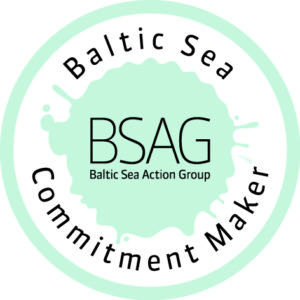The co-operation is another exciting step towards the 2030 target of using only recycled nutrients for wastewater treatment at all UPM sites around the world. Using recycled nutrients is the third commitment UPM has made to the Baltic Sea Action Group, an organisation devoted to protecting the Baltic Sea. UPM Kaukas uses all the nutrients available at the Joutseno composting plant replacing around 4,5 tonnes of nitrogen each month.
The use of recycled nutrients in water purification is good common sense: the industrial production of nutrients is energy intensive. Phosphorus, often used in nutrients, is a depleting natural resource that is in better use as a fertiliser in agriculture. The wastewater generated in many industrial processes is rich in nutrients, not nutrient-poor, as in the forest industry. That nutrient-rich wastewater could often be utilised as such for the nutrient-poor wastewater treatment bacteria in circular economy co-operation between companies. If these side streams are not utilised, they will increase the wastewater load to treatment plants and cause additional costs for the companies.

Economy, environment and bacteria together for more sustainable action
After the idea of recycling side-stream nutrients at UPM Kaukas was presented to Kekkilä in the spring of 2018, things started moving quickly. Taru Päiväläinen, researcher at UPM Northern Europe Research Center, was responsible for the project at UPM. Päiväläinen has since moved over to UPM’s Responsibility team.
“In the summer we ran a two-week laboratory simulation on how Kekkilä’s wastewater works as a nutrient in our wastewater treatment plant. The results were promising, so we quickly moved on to a mill scale test run. The test continued until Christmas, after which we decided to continue the same way. In the reject water generated by Kekkilä, nitrogen is in the form of ammonium, which is the most preferred form of nitrogen for our diligent organisms in the waste water treatment plant,” says Päiväläinen, who spent lonely hours working hard on the tests on Midsummer, an important summer festivity in Finland.
The Kekkilä composting plant produces reject water when damp exhaust air is discharged from its’ thirteen composting tunnels, through the ammonia scrubber and the biofilter. Moisture condenses into reject water and is directed into a tank. Once filled, the tank is transported to Kaukas.
”Before the cooperation we ran the reject water into the municipal wastewater treatment. This collaboration makes the entire process more sustainable. In the last few years we have taken many steps forward in handling our wastewater. This is another good example of our efforts and works well for the environment and for us financially as well. It also has a local employment effect. Everyone benefits from both the project and the bigger idea behind it,” says Vesa Kaipia, the facility manager at Joutseno composting plant.
Kekkilä Recycling's composting services are available to anyone. Typical clients are municipalities, food companies and forest industry operators. The majority of the compost produced at Joutseno is used as a base for producing garden soil for Kekkilä’s garden soil pickup stations.
For the municipal waste water treatment plant of Lappeenranta, the collaboration between Kekkilä and UPM is a welcome development.
“Bringing down the load industrial waste water causes on our water processing and evening out the load spikes of water run into the sewers is quite significant to our operations. We expect this collaboration to be another step towards these end goals,” says Riitta Moisio, water and environment manager at Lappeenrannan Lämpövoima Oy.
The Kekkilä Composting Plant is located just 15 kilometres from Kaukas.
“The short distance is essential, especially when it comes to liquids. Sustainability is easily lost in heavy traffic. This is why we want to use locally-sourced nutrients for recycling,” says Päiväläinen.
The journey towards the 100% target continues
The 100% recycling target sought by UPM is not a modest goal. Four to five thousand cubic meters of water per hour flow into UPM Kaukas’ waste water treatment plant alone. The water in the wastewater treatment plant’s aeration basin is purified by microbes for about 24 hours and is led back into the water course / natural water bodies about two days after it has left the mill process’.
“We have tested reject water from anaerobic digesters before, and it worked well. However, Kekkilä's nutrients are sourced from nearby and contain more nitrogen. We will not meet the 2030 target with this alone. If we could find a similar partner, we might be able to use more than one type of nutrient. We’ve also looked into nutrients we produce in our mill operations, but many of them contain impurities that would require new technology to be brought into the process,” describes Minna Maunus-Tiihonen, UPM Kaukas Environmental Manager.
Continued mapping of cooperation opportunities and research work is ongoing at all UPM sites.
“This is a great example of cooperation between a mill, a research centre and an external operator. The research centre laboratory has also done a great job here. We will continue on the same path to find new partners in recycled nutrition solutions to reach the 2030 target,” concludes Suvi Rasa, who continues Taru Päiväläinen’s research at UPM Northern Europe Research Center.
Read more
UPM’s approach to circular economy
Learn more about the Baltic Sea Action Group
Text: Saara Töyssy
Main picture: Kekkilä Recycling Joutseno composting plant
